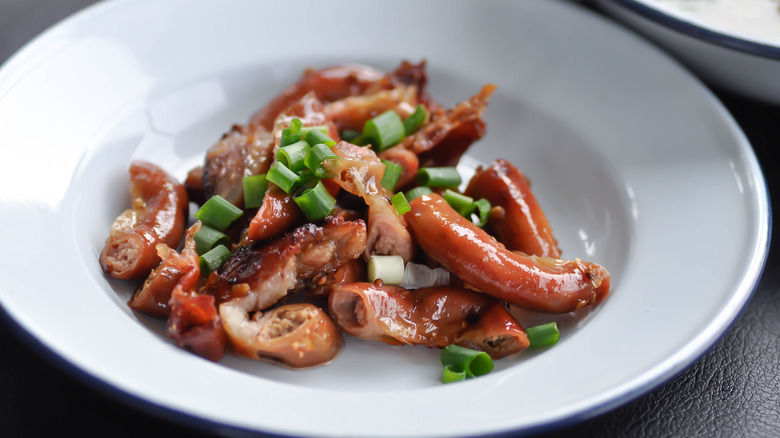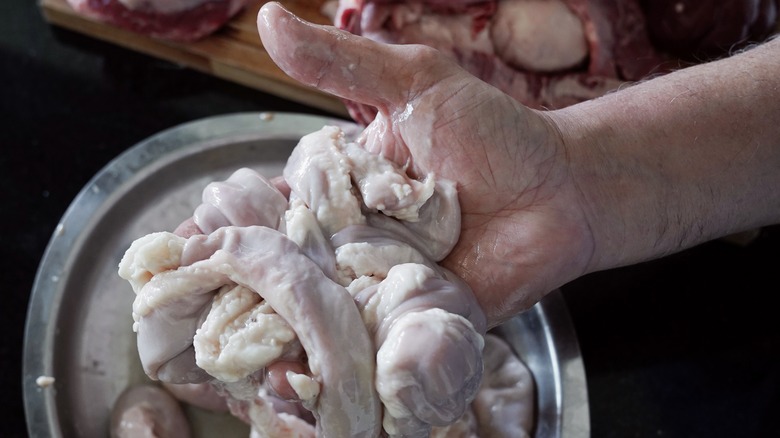Here's The Best Way To Thoroughly Clean Chitterlings
Once known as a Southern delicacy, throughout the years, chitterlings (or chitlins) have become as common as cornbread and can be found across the entire USA. While commonly ranked as one of the worst cuts of pork you can buy, for those who do enjoy this unusually satisfying gem of a meat, there is a labor-intensive process that awaits you: cleaning them! First, make sure that you select a brand that says "hand-cleaned" –- any extra sanitization you can get is going to be helpful. You'll also want to make sure you have some baking soda as it's great for cleaning. If you don't have any, you can also use vinegar.
Now, to be extra safe, the CDC suggests boiling your chitterlings for 5 minutes. This will get rid of most bacteria that could cause cross-contamination issues in your kitchen. When done, drain your chitterlings. When they're cool to the touch, you'll want to bring out your baking soda or vinegar. Pour the chitterlings into your kitchen sink (or a large bowl) and submerge them in cool water, along with 2 tablespoons of baking soda or vinegar. Let them sit in the water for 2-3 minutes. Now, it's time to scrub them, both inside and out. Examine each piece and discard any pig waste, possible straw, and fat you see. Give them another rinse in the water for 2-3 minutes, then drain them again. Now place them in a bowl.
Some important tips to consider when cleaning your chitterlings
If you really want them as clean as possible, after putting your chitterlings in a bowl, make sure to drain the water from your sink and do this process all over again. You can skip out on using the baking soda or vinegar and just use plain water. Now, do it again, possibly up to 4 more times, until your sink water is free of any debris from the chitterlings.
Many know of the rancid smell these babies can cause in your house, so try adding some extra ingredients to your pot when you boil them. Yellow or white onions, bell peppers, or red pepper flakes will help mask any unpleasant scent. You can also use salt when you scrub your chitterlings, which will quickly wash away its fatty lining. If you're unable to turn them inside out, then you can take a knife or scissors and cut them so it's easier to clean the insides. After completing the cleaning process, you can now proceed to cook your chitterlings while anticipating the joy of savoring them during your holiday meals. Just make sure to sanitize any surfaces or tools the chitterlings touched with a diluted bleach solution once you're done. Better safe than sorry!

